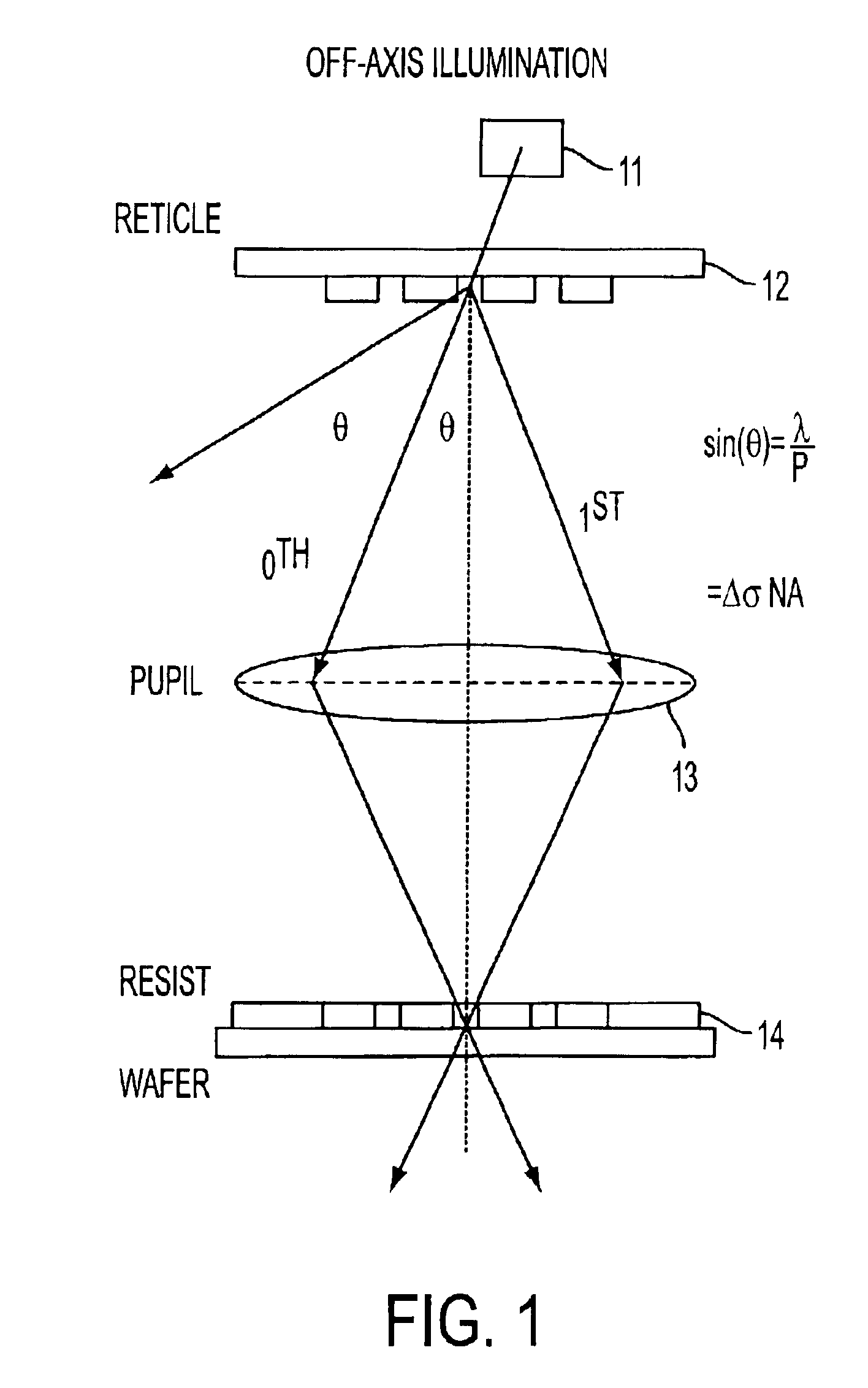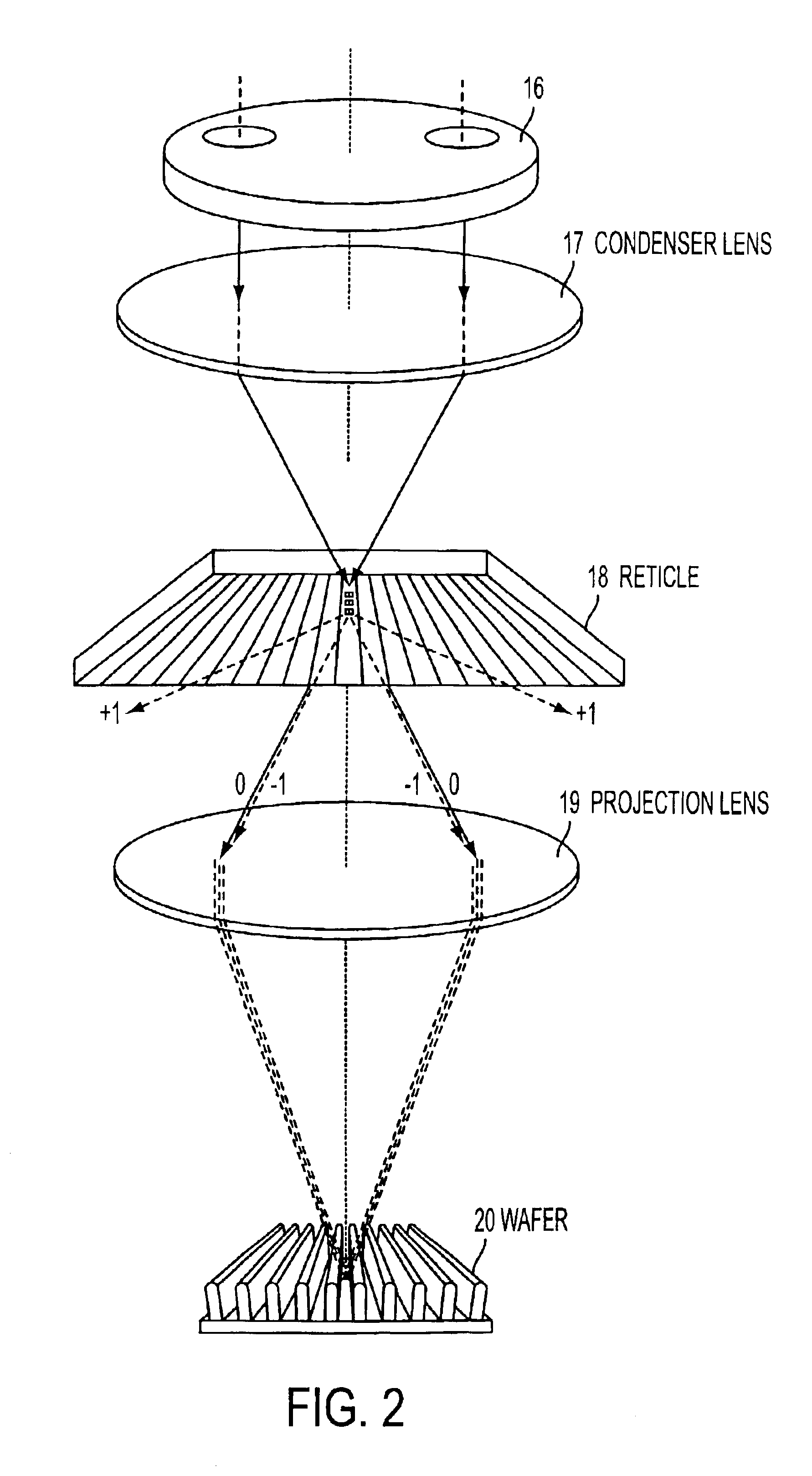Method and apparatus for performing rule-based gate shrink utilizing dipole illumination
a dipole illumination and gate shrinking technology, applied in the field of photolithography, can solve the problems of reducing reducing cd (critical dimension) of the corresponding mask pattern approaching the resolution limit of the optical exposure tool, so as to reduce the length of the transistor gate, reduce the length, and reduce the size of the integrated circuit.
- Summary
- Abstract
- Description
- Claims
- Application Information
AI Technical Summary
Benefits of technology
Problems solved by technology
Method used
Image
Examples
Embodiment Construction
[0039]As explained in more detail below, the preferred embodiment of the present invention utilizes dipole illumination, which is an off-axis illumination (OAI) technique, in combination with a gate shrink technique in order to reduce the gate length of the transistors contained in the semiconductor device to be printed on a substrate. FIG. 1 illustrates the concept of off-axis illumination. As shown, increased focus latitude and image contrast are achieved by capturing at least one of the first orders of the pattern spatial frequencies. A typical off-axis illumination system includes in-part a light source 11, a mask 12, a lens 13 and the wafer 14 covered with photoresist.
[0040]FIG. 2 illustrates the basic principles of dipole illumination. As is known, the light source is confined to two poles in order to create the conditions for two-beam imaging with theoretical infinite contrast. Referring to the example set forth in FIG. 2, the dipole illumination system includes in-part a dip...
PUM
| Property | Measurement | Unit |
|---|---|---|
| wavelength | aaaaa | aaaaa |
| wavelength | aaaaa | aaaaa |
| wavelength | aaaaa | aaaaa |
Abstract
Description
Claims
Application Information
 Login to View More
Login to View More - R&D
- Intellectual Property
- Life Sciences
- Materials
- Tech Scout
- Unparalleled Data Quality
- Higher Quality Content
- 60% Fewer Hallucinations
Browse by: Latest US Patents, China's latest patents, Technical Efficacy Thesaurus, Application Domain, Technology Topic, Popular Technical Reports.
© 2025 PatSnap. All rights reserved.Legal|Privacy policy|Modern Slavery Act Transparency Statement|Sitemap|About US| Contact US: help@patsnap.com



